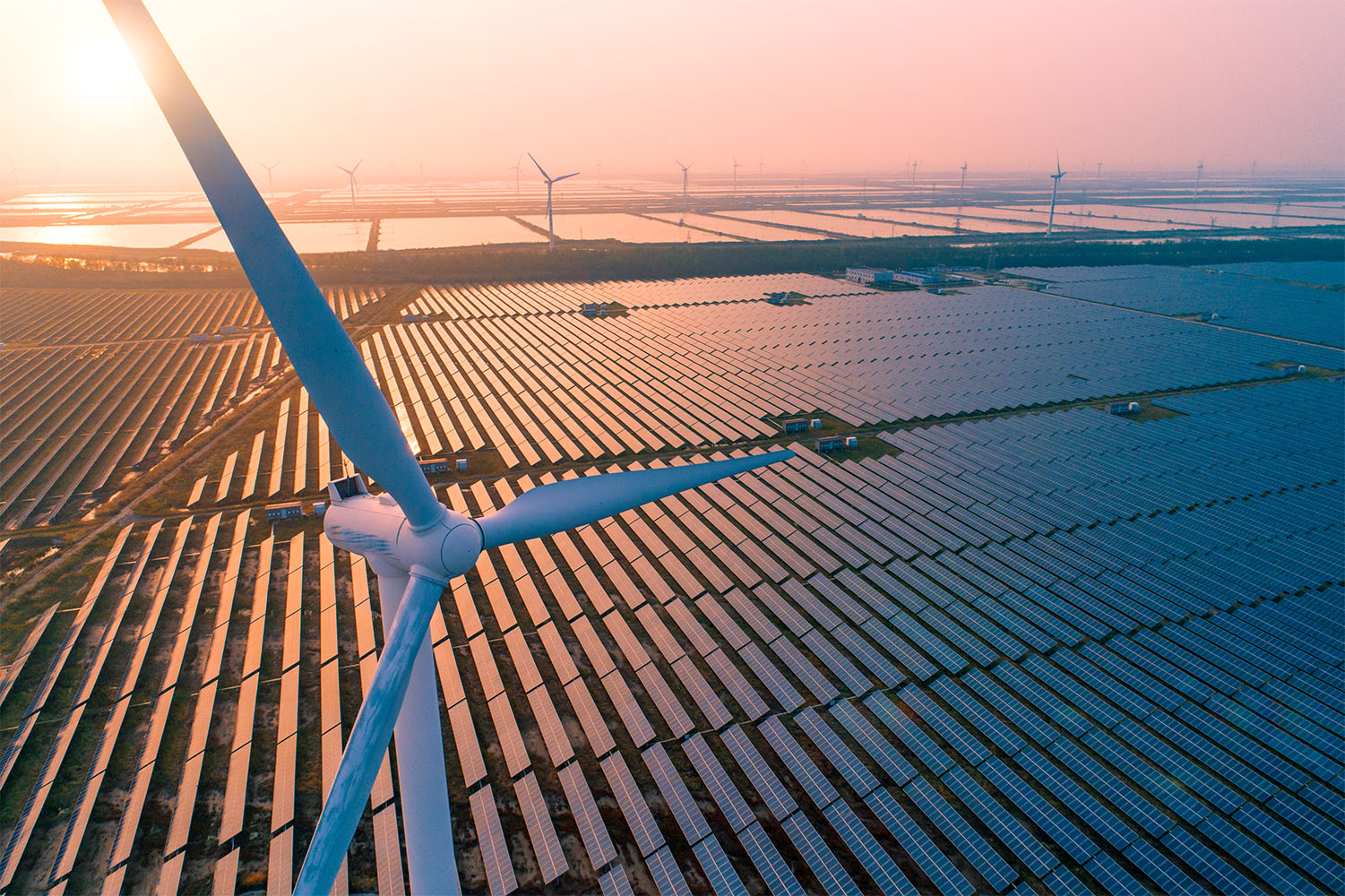The Energy Transition | UK government confirms bonus scheme for offshore wind
Published on 18th November 2024
Welcome to our top picks of the latest energy regulatory and market developments in the UK's transition to net zero

This week we look at the Government's new Clean Industry Bonus scheme, Ofgem proposals to improve grid connections, Great British Nuclear plans for modular reactors and more.
Government confirms introduction of a clean industry bonus for offshore wind developers
The UK government has confirmed the introduction of the Contracts for Difference (CfD) Clean Industry Bonus (CIB) to incentivise offshore wind developers to invest in sustainable supply chains.
The CIB will be introduced into the government's broader scheme for incentivising low carbon energy generation from CfD allocation round 7. It will allow fixed and floating offshore wind CfD applicants to apply for additional revenue support if they choose to invest in improving the social, environmental and economic sustainability of the supply chain. The CIB is an evolution of the CfD Sustainable Industry Rewards scheme proposed last year.
If a CfD applicant is successful in its application, it will be contractually required to deliver its CIB commitments. This includes the requirement that amounts awarded must be used for building, acquiring or improving tangible assets in line with various sustainability criteria.
The CIB will have a provisional budget of £27 million per gigawatt (GW). The government has noted that if between 7GW to 8GW of offshore wind capacity applies in the next CfD allocation round, the CIB budget could reach up to £200 million.
The scheme is scheduled to open in February 2025. Applicants must submit proposals to the Department for Energy Security and Net Zero (DESNZ) outlining how they will deliver shorter supply chains and sustainable means of production and at what cost. Applicants must also obtain a CIB statement from the government before participating in the main CfD round.
These proposals will be assessed and ranked by DESNZ with the bonus funding distributed accordingly. Guidance on the application and distribution process has also been published.
DESNZ has also opened a consultation on the changes necessary to implement the CIB, which will be open until the 10th of December.
Confirming the CIB scheme at the COP29 summit in Azerbaijan, Sir Keir Starmer, the UK prime minister, said: “Our mission to make Britain a clean energy superpower will fire up our industrial heartlands and break down barriers to growth in our hard-working towns and cities. It will strengthen our national security - protecting our children and grandchildren from the climate crisis, and impact this will have on their future prosperity".
Ofgem announces new proposals to cut connections queue
Ofgem has set out several proposals which it hopes will speed up the process of getting new projects connected to the energy system, as well as preventing the connections queue from being "clogged up with unviable projects". These reforms follow the National Energy System Operator's Clean Power 2030 Action Plan and proposals for grid connection reform.
The proposals are part of a consultation document that marks the end of the first stage of Ofgem's "end to end" review of the connection process. The review has assessed each stage of the connection process, across the transmission and distribution systems, to establish where changes can be made. Ofgem has grouped the issues they have found into seven key themes:
- Visibility and accuracy of connections data.
- Improved standards of service across the customer journey.
- Network companies being required to meet connection dates in connection agreements.
- Quality of connection offers and associated documentation.
- Ambition of connection offers.
- Minor connections.
- Provisions and guidance for determinations.
As part of this, Ofgem is also proposing financial penalties for networks that fail to deliver an effective connections process. At present, Ofgem notes that there is little opportunity for network companies to be held to account for failures in relation to delivery of individual connections and the products and services needed to facilitate these. This has resulted in projects experiencing delays leading to connection dates far beyond those outlined in their connection contract.
Ofgem estimates that, if approved, the proposals would reduce the 722GW of projects currently in the queue, by prioritising schemes that can be operational within five years and those which help to hit the government’s 2030 goal.
Ofgem states that both the connections process and regulatory reform are needed together in order to achieve the required outcomes. Ofgem expects to take decisions on the package of connection reforms in the first quarter of 2025, with a view to issuing revised offers under the new process later that year.
Eleanor Warburton, director for energy system design and development at Ofgem, said the reforms would cut down on "delays to the hundreds of approved projects that are ready to connect to the grid; this will in turn block hundreds of unviable, stalled and speculative schemes in the process"
Ofgem announces new subsea interconnector projects
Ofgem has announced the approval of five new subsea interconnector projects that aim to increase the flexibility of the grid and address the challenges posed by the intermittency of some renewable energy sources.
One of the projects will link the UK and German energy grids, while two will link the island of Ireland with different points in Wales and Scotland. The remaining two projects will create Britain's first ever offshore hybrid assets (OHAs). The next evolution in interconnector technology, OHAs provide not only interconnection capability but also direct connections between offshore wind farms and different energy grid systems. This combination of capabilities wraps interconnection and offshore wind connection into a single asset and will help to minimise the environmental impact of new projects, as well as reduce costs.
Interconnector and OHA projects will be key in managing the supply of energy both in the UK and across Europe by allowing the efficient transmission of energy between grid systems. They allow for the effective import of energy where domestic sources are not sufficient to meet demand, and for the export of excess energy where supply exceeds demand. This is especially important given the UK is expected to become a net exporter of energy by 2030.
Akshay Kaul, Ofgem director general for infrastructure, commented: "As we shift to a clean power system more reliant on intermittent wind and solar energy, these new connections will help harness the vast potential of the North Sea and play a key role in making our energy supply cheaper and less reliant on volatile foreign gas markets."
The projects are all expected to be operational by the end of 2032, and will increase the UK's current interconnector capacity over 18GW.
Great British Nuclear begins negotiation phase of small modular reactor programme
Great British Nuclear (GBN), the new publicly owned company heralded by the Labour government as a cornerstone of its net-zero policy, has begun negotiating with the final four shortlisted bidders for the UK's Small Modular Reactor (SMR) programme. Three of the four shortlisted companies propose to use pressurised water reactors while one is proposing a boiling water reactor.
The UK government launched GBN in July 2023 and, shortly after, began the tender selection process. The six technologies that would be eligible to bid were selected in October 2023, with five initial tenders received by GBN ahead of the July 2024 deadline. The list of the final four companies was published in September.
Each technology in this stage has been the subject of thorough analysis by GBN, and the designs submitted by each are considered safe, deliverable and fit for use in the UK nuclear programme. Following negotiation with each company, final tenders will be submitted and a decision made in spring 2025, with an aim for a final investment decision to be reached in 2029.
Simon Bowen, chair of GBN, said: "This is a significant moment for the SMR programme. Our technical experts have assessed each design in detail and are very confident these SMRs could play a key role in the UK’s future energy mix. The negotiation phase will enable us to select the absolute best technologies on the best terms for the UK."
This article was written with the assistance of Alexander Eaton, James Harnett and Joe Sandom, trainee solicitors at Osborne Clarke.







